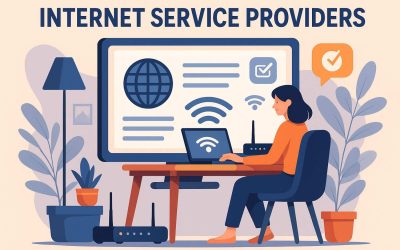Rebeca Mackay Miller, founder of BLOC + ROSE, discusses word of mouth and why it should be on your top priority marketing list.
A few weeks ago, I saw a call out for companies to share their ‘creative’ word of mouth marketing strategies. I devoured the request like a kid in a sweet shop, but it seems I was alone in my enthusiasm.
I wasn’t surprised.
Word of mouth (WOM) in its purest sense; organic conversations about brands that take place between real people, isn’t cool anymore. Or more to the point, other things are cooler. Influencer marketing has stolen its crown, creativity in this context now comes from the content creators, not the brands. My own somewhat unimaginative word of mouth marketing strategy lays testament to this. But more on that later.
Regardless of the cool, or even the creativity factor, word of mouth marketing is undeniably powerful. 83% of us trust the opinions of friends and family over advertising and the same percentage act based on those recommendations.
It’s also hugely effective. According to a 2014 study word of mouth amplifies the effect of paid media by 15% and just one offline WOM impression is 5x (up to 100x) more effective than one paid media impression. Read that again.
Word of mouth serves up awareness, credibility, authenticity, and trust by the bucket load. But, if it isn’t generated by headline hitting creativity, what’s the driving force?
Human interaction powered by basic social needs. In nutshell; psychology.
Here’s what you need to know.
No one wants to talk about your business
First up, there are only ever three reasons why someone would talk about you:
1. BECAUSE OF ‘YOU’
They love, trust (or hate!) what you do and stand for enough to form an opinion and share it. ⠀
2. BECAUSE OF ‘US’
This is about the community. They feel like they’re part of something and are proud of it.
3. BECAUSE OF ‘ME’
You make them look good, feel important and connected.
What’s the thread that ties all three together? Them. The person doing the talking. Not you.
The dirty truth is that no one wants to talk about your business.
A person’s motivations for doing so are nearly always selfish and ego-driven. They’re using their experiences with your business as a platform to talk about themselves. A good word of mouth strategy should quietly enable these conversations, not shout “look at me”.
Penn & Teller have been performing together since the 70’s. At the end of each show, the magicians run through the audience and wait in the foyer to greet their fans. They take selfies, shake hands, talk. Each night 200 guests leave with a story to tell.
What makes us more likely to share one experience over another?
If you’re into acronyms, Jonah Berger’s STEPPS model might tickle your fancy. It summarises six reasons things go viral:
- They provide Social Currency; give people something of value to talk about.
- They’re associated to Triggers which kick start conversations. Red Wine & Cheese anyone?
- They’re Emotional – when we care, we share.
- They’re Public, we can see others using it (think iPads white headphones).
- They offer Practical Value, hints, hacks, recipes etc.
- They’re wrapped up in Stories that people tell.
Beyond the experience, basic social needs must also be met. Humans are naturally risk-averse creatures; we instinctively seek safety. When we sense danger or feel threatened our fight or flight response kicks in – a state unconducive to spreading positive feels about your brand.
81% of people site trust as key factor in the purchase decision-making process. It’s just as important for generating word of mouth; earn their trust or they won’t talk.
The good news is there’s a strategic framework that will help you do just that.
The five elements that make up a successful word of mouth marketing strategy
Your ‘Talkers’
These are the people spreading the word. They come in all shapes and sizes but will have three things in common: they’re passionate about your industry, have a degree of knowledge and as such credibility and they make it their business to be well connected.
Think outside the box here. Every time a new show opened a theatre director gave free tickets to local taxi drivers. In return, they’d rave about the show to their passengers. Within two years, sales had doubled.
Once you’ve identified your ideal Talkers, profile them. Understanding pain points is not enough; you want them to do more than buy your services, you want them to recommend you, so you must go one step further and understand their motivations for doing so. What’s in it for them? Once you figure it out, fuel it.
Connection – the contents of your content
All word of mouth starts with a message to spread, so being crystal clear on what it is you want to be known for is the bedrock of a WOM strategy. If you don’t know, how will anyone else?
As a starter revisit your list of Talkers and consider what they talk about, how you can add value there and build a content plan around it.
This is how I arrived at my word of mouth strategy, which is ironically the topic of word of mouth. It wasn’t intentional, it just happened that as no one else was talking about it, I became known for it.
If all else fails, be playful! Much like the hotel chains who have goldfish bowls in every room, to keep traveller’s company while away from home.
Activation – the format of your content
Next, make it repeatable. Simple. Easy to share. Think bullets and bitesize sentences, straight forward language and no sales or marketing spiel – no one talks like that in real life.
Participation – other people’s content
The beauty of word of mouth is that it’s a dialogue. You get to be a part of the marketing channel, to join the conversations already happening about your product, service, or industry, add value to it and importantly fuel it. The only rule is to join the conversation as an expert, never a salesperson. No one likes being overtly sold to.
Tracking
Word of Mouth doesn’t happen over-night, so keeping track of and learning which topics do and don’t work will ensure you stay focused. Shares and mentions on social media, email forwards and referral schemes are all great indicators.
My favourite tool is the Net Promotor Score (NPS). It’s easy to implement tells you how likely it is that your audience would recommend you.
So that’s all folks!
Word of mouth isn’t cool, but it can be fun. And when executed strategically is a bloody effective tool for growth. It gets my vote, even if it’s the only one.
Connect and do business with BLOC + ROSE on Enterprise League
Conclusion
Remember that genuine word-of-mouth must be earned through consistent value delivery and building trust. Start small by implementing one or two strategies discussed in this article, measure their impact, and adjust your approach accordingly. Whether through referral programs, social proof, or creating shareable moments, the key is to make your customers feel valued and heard. When you turn your customers into advocates, you’re not just building a business; you’re creating a community that grows stronger with each positive recommendation.
More must-read stories from Enterprise League:
- Motivating business role models to inspire your entrepreneurial spirit.
- Proven and tested psychological tactics for successful marketing.
- Things to consider before deciding on a business location.
- Engaging online networking events that you should not miss.
- Tactics for using TikTok marketing for your small business successfully.
Related Articles
What Companies Offer Horse Transportation Services? 5 Options to Review
Transporting a horse involves more than simply loading it into a trailer. When the stakes include international regulations, health certifications, quarantine rules, shipment timing and an animal's well-being, the process becomes a complex logistical project. If you...
Financial and Fintech Software Development Companies to Consider
Financial and fintech software development is crucial for organizations wanting to remain competitive in an increasingly digital marketplace. Leaders and decision-makers must be able to understand complex regulatory requirements while meeting the growing expectations...
Internet Service Providers: What You Need to Know
You need a fast connection for streaming shows, working from home and playing video games, so finding the right internet company is essential. The crowded market of providers includes promises of good deals and unrestricted connections. What are the top...
What Companies Offer Horse Transportation Services? 5 Options to Review
Transporting a horse involves more than simply loading it into a trailer. When the stakes include international regulations, health certifications, quarantine rules, shipment timing and an animal's well-being, the process becomes a complex logistical project. If you...
Financial and Fintech Software Development Companies to Consider
Financial and fintech software development is crucial for organizations wanting to remain competitive in an increasingly digital marketplace. Leaders and decision-makers must be able to understand complex regulatory requirements while meeting the growing expectations...






